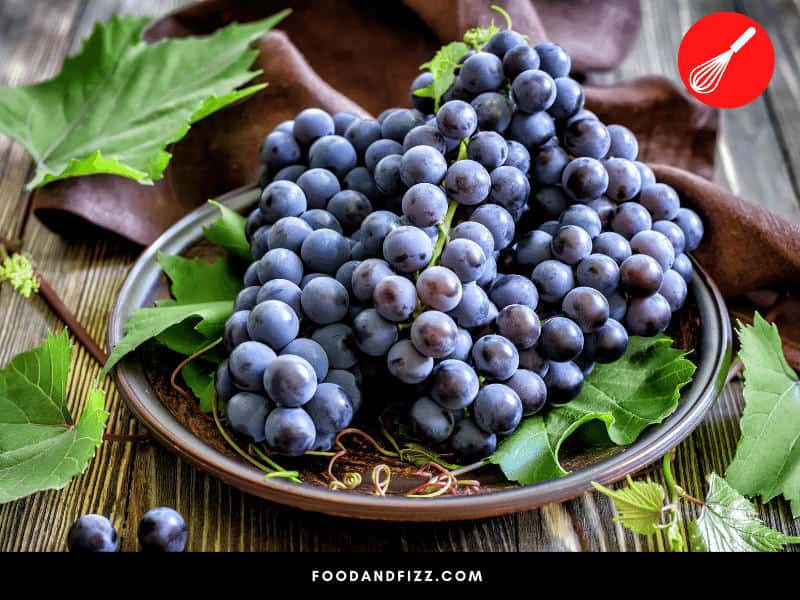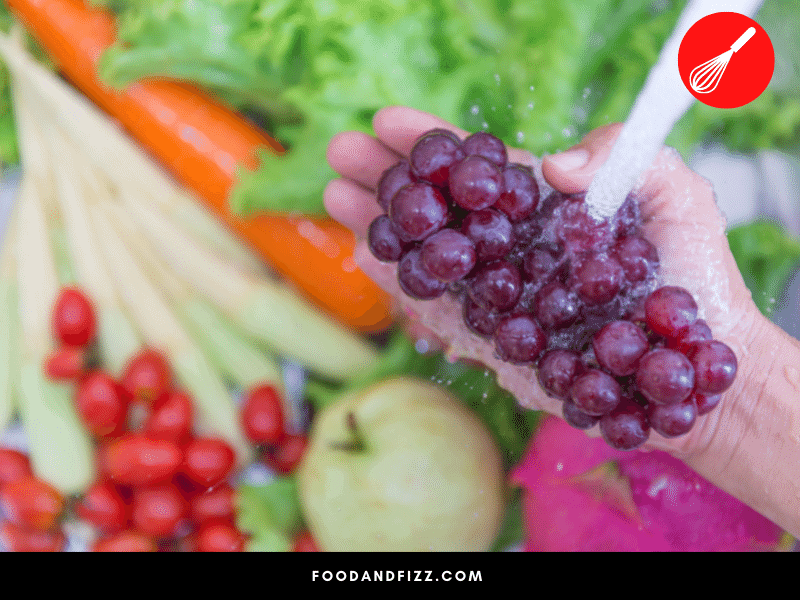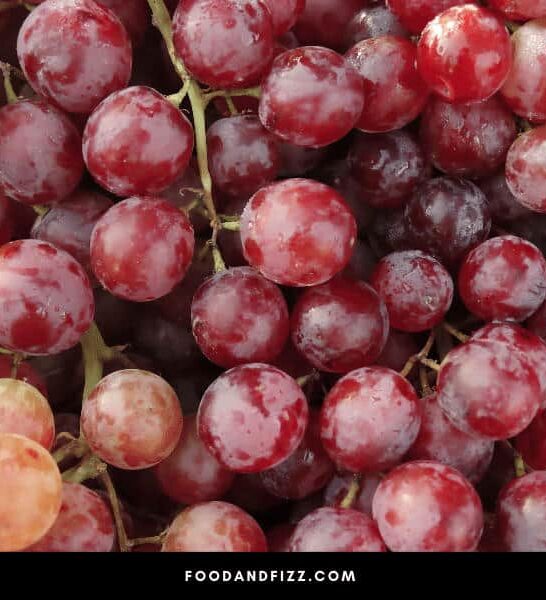Do you know what the white stuff on grapes is? A lot of people don’t, and they avoid eating grapes altogether because of it. In this blog post, we will teach you what the white film is and where it comes from. We will also let you know if grapes are safe to eat with the white stuff on them, and when to know when a grape has gone bad.
What is the White Film On Grapes?
The white film on grapes is a wax that is naturally produced by grapes when they are growing to keep in moisture. If the grapes do not have this white film they are susceptible to withering and will not be good to eat.

Why Do Grapes Have a White Film?
The white film on grapes is part of the natural growing process to keep moisture inside. That isn’t the only element of the white film though.
The white film is very waxy and has a sticky texture so any kind of dust that is floating in the air will get caught by the waxy film.
The last part of the grape that adds to the white film is yeast. The yeast actually isn’t produced by the grape itself but from the ambient environment around the grape.
The yeast isn’t bad for you though, it is actually used in the fermentation process of wine.
So the next time you see a grape with a white film on it, don’t be afraid to eat it. The white film is actually part of the grape’s natural defense system and isn’t harmful to consume.
In fact, you might even find that the grapes with the white film taste better because they are fresher.

How To Know When a Grape Has Gone Bad
The natural white film on grapes makes it confusing to know if the grape is bad or not.
The best way to tell if a grape has gone bad is to inspect it closely and look for any mold or discoloration on the grape. If you see any of these, then it is best to discard the grape.
Your grapes don’t have to have mold growing on them for them to look bad. If they look withered at all it is a clear sign that your grapes aren’t doing well. When grapes are becoming dehydrated they will start to lose their circular shape and look more like raisins.
Another way to tell if a grape has gone bad is by smell. Grapes that have gone bad will start to develop an unpleasant smell. If you notice this, then it is best to discard the grape.
If you are still unsure if a grape has gone bad, then the best thing to do is taste it. If the grape tastes sour or off, then it has gone bad and should be discarded.

Do Pesticides Leave a White Film on Grapes?
Every grape growing season, pests and insects will try to get to the grapes before you do.
In order to keep these pests away, farmers will use pesticides. These pesticides can sometimes leave a white film on grapes that may look just like the waxy film that naturally occurs on the grapevines.
The good news is that this white film should not hurt you in the short-term but prolonged exposure to pesticides is never healthy.
What everyone should do when they first get their grapes, regardless of whether they see the white film or not, is to wash all the grapes under running water.
You don’t need to scrub the grapes thoroughly but as long as you use your hands to rub off any discoloration you should be fine.

Does the White Film Always Stay On The Grapes?
The white film is known as the bloom on grapes but you don’t need to settle for the white film every single time you buy some at the grocery store.
The bloom on grapes can eventually fade over time but this is a sign that the grape is not as fresh as it could be.
This is because the bloom helps retain moisture for the grapes and keeps them tasting fresh and bursting with delicious juice.
The bloom will also fade if the grape is stored in an area that is too warm or humid because it causes the grape to degrade faster than in a colder climate. This is why it is always helpful to keep your grapes in a refrigerated environment.
Buying grapes without a white film is a great way to be able to immediately eat your fruit but they might not be as fresh as what you were expecting.

Solving the White Film Substance on Grapes
White film is more than likely not harmful at all if you find it on your grapes but it might be a residue left from pesticides. Either way, you can just clean it off with some running water and your hands and the grapes should be safe to eat.
If you are worried about your grapes having powdery mildew or other fungus-growing you might want to throw them out to be safe.
Frequently Asked Questions on What is the White Film On Grapes?
How Do You Get the White Film Off of Grapes?
To get the white color off the grapes, all you have to do is wash the grapes under running water and rub the grapes with your hands. You can use a light scrub if the white film isn’t removed using your hands.
What is Powdery Mildew on Grapes?
If you see powdery mildew it means the grapes are growing a fungus on the outside of the skin. If washed off regularly you can still eat the grapes but the fungus can ruin the grapes during the growing process.
Is the White Film on Grapes Found On Other Fruits?
The white film on grapes can be found on other fruits as well. This film is called bloom and it helps the fruit to retain moisture and keep the fruit tasting fresh and you can find it mainly on various types of berries.

